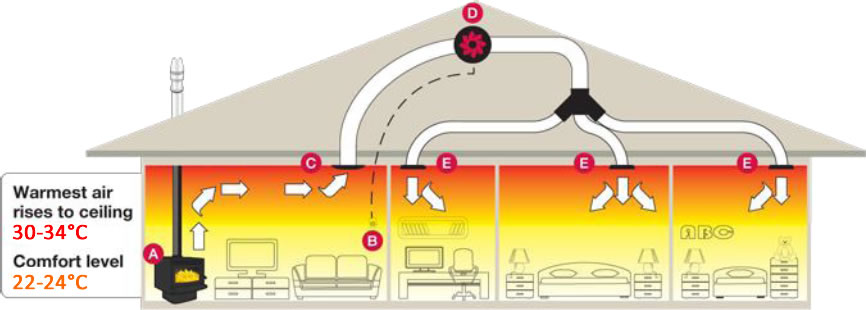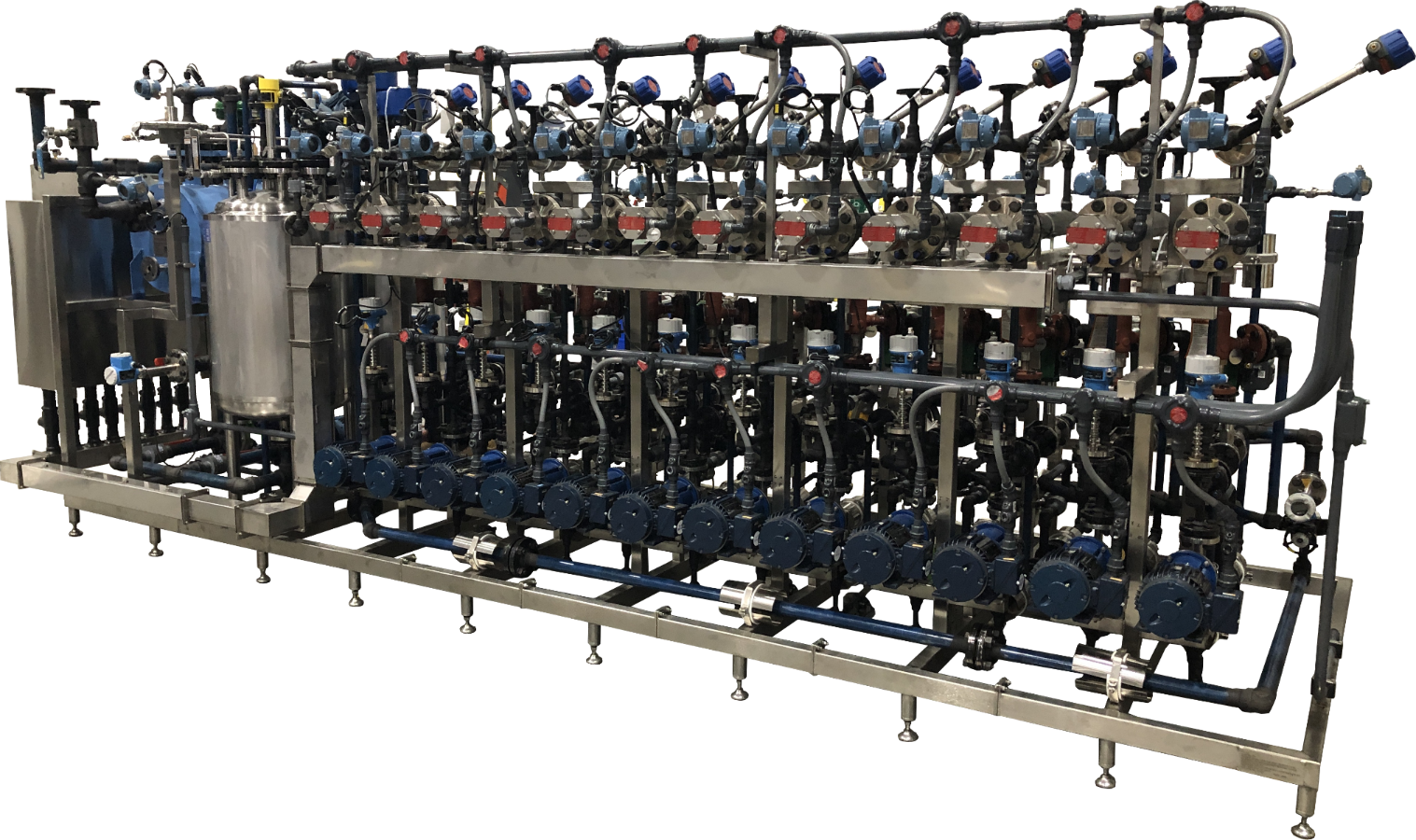Discovering the Conveniences and Applications of Heat Transfer Equipments in Modern Market
Heat transfer systems play a vital function in modern-day industry. They include different systems such as radiation, convection, and conduction, each contributing to effective thermal management. Industries like production and aerospace advantage substantially from these systems. As advancements continue, the assimilation of ingenious products and modern technologies promises to enhance energy performance. This development raises important inquiries concerning the future ramifications for sustainability and functional expenses across numerous markets. What lies ahead in this continuous change?
Comprehending Heat Transfer Concepts
Heat transfer concepts are fundamental to the procedure of different industrial systems. These principles encompass the devices of convection, radiation, and transmission, each playing an important role in managing thermal power. Understanding conduction entails examining how Heat relocates via strong materials, while convection relate to Heat transfer in liquids, driven by liquid motion. Radiation, distinctive from the various other two, includes power transfer with electro-magnetic waves. The effectiveness of Heat transfer influences system performance, power consumption, and total efficiency. Reliable thermal administration is necessary in processes such as air conditioning, heating, and Heat recovery. By understanding these principles, industries can optimize their operations, lower energy prices, and boost devices long life, thus adding to a more efficient and sustainable industrial landscape.
Secret Kinds Of Heat Transfer Solutions
While various markets utilize Heat transfer systems for varied applications, a number of essential types stick out because of their specific functions and efficiencies. One of the most typical kinds consist of radiation, convection, and transmission systems. Transmission systems transfer Heat through straight call between materials, making them reliable in solid-state applications. Convection systems, on the various other hand, make use of fluid movement to transfer Heat, appropriate for home heating or cooling down gases and fluids. Radiation systems run without a tool, depending on electro-magnetic waves to move Heat, ideal for high-temperature environments. Each kind serves unique functions, permitting markets to tailor their Heat transfer remedies based on functional requirements, energy performance, and cost-effectiveness. Understanding these systems is crucial for enhancing efficiency in numerous commercial setups.
Industrial Applications of Heat Transfer Technologies
The application of Heat transfer innovations in market plays a vital role in improving power performance and enhancing processes. DVS Heat Transfer Systems. By implementing innovative Heat exchange systems, business can significantly lower their environmental effect while enhancing overall performance. This integration not just cultivates sustainability but additionally lines up with modern regulative and customer demands for greener techniques
Energy Performance Improvements
As markets significantly focus on sustainability, power performance improvements in Heat transfer technologies have become essential for minimizing functional expenses and environmental effect. Improved Heat exchangers, as an example, make use of sophisticated materials and layouts to maximize thermal performance while decreasing energy intake. In addition, integrating variable rate drives in pumping systems permits for far better control of fluid flow, leading to significant power cost savings. The application of smart sensors and automation offers real-time tracking, making it possible for modifications that enhance power use. In addition, waste Heat healing systems capture excess thermal energy, transforming it into useful power. These advancements not only enhance energy efficiency but additionally add to a more sustainable industrial landscape by decreasing greenhouse gas emissions and supporting conformity with ecological regulations.
Process Optimization Techniques
Process optimization strategies are essential in enhancing the performance and effectiveness of Heat transfer innovations in commercial applications. These methods involve refining processes to maximize Heat transfer performance while minimizing power usage and functional expenses. Techniques such as computational fluid characteristics (CFD) modeling permit engineers to examine and replicate Heat transfer circumstances, recognizing areas for improvement. Additionally, real-time tracking systems can offer useful data on temperature level gradients and circulation prices, enabling modifications that maximize efficiency. Moreover, carrying out advanced control strategies, such as anticipating analytics, can enhance system responsiveness to varying operational demands. By applying these optimization strategies, industries can attain higher thermal efficiency, lowered downtime, and enhanced product quality, eventually bring about raised competitiveness in the industry.

Environmental Impact Reduction
While commercial Heat transfer innovations are vital for operational performance, their application additionally presents possibilities for significant ecological effect decrease. By improving power performance, these systems lessen fuel usage, resulting in lower greenhouse gas discharges. For example, progressed Heat exchangers can recover waste Heat, rerouting it to preheat incoming fluids, therefore reducing energy needs. On top of that, the assimilation of Heat transfer innovations in eco-friendly power systems, such as solar thermal and geothermal applications, sustains the change to lasting practices. Industries that use these modern technologies likewise take advantage of decreased functional prices and improved regulatory conformity. Overall, the critical implementation of Heat transfer systems not only bolsters performance yet additionally fosters a more sustainable commercial landscape, adding to worldwide ecological objectives.
Benefits of Reliable Heat Transfer Solutions
Effective Heat transfer systems provide significant advantages in modern-day market, mainly through improved power efficiency and price reduction. By enhancing thermal monitoring, these systems decrease energy waste, bring about lower functional costs (DVS Heat Transfer Systems). Companies can attain higher sustainability and boosted productivity.

Energy Efficiency Improvements
As industries increasingly prioritize sustainability and cost-effectiveness, power performance enhancements in Heat transfer systems have become a crucial focus. Improved effectiveness in these systems leads to decreased power consumption, making it possible for facilities to run more sustainably. By maximizing Heat transfer methods, markets can lessen waste Heat and accomplish far better thermal management, substantially reducing their ecological influence. Breakthroughs in innovations such as Heat exchangers and insulation materials add to improved efficiency and integrity. Moreover, carrying out energy-efficient Heat transfer remedies not just supports compliance with governing requirements however likewise fosters a culture of advancement within companies. Inevitably, these enhancements are essential in straightening industrial operations with international energy preservation goals, leading the way for a more sustainable future in production and processing markets.
Cost Reduction Opportunities
By optimizing Heat transfer systems, industries can reveal substantial price decrease chances that improve their lower line. Effective Heat transfer minimizes power usage, leading to lower utility costs and decreasing functional expenses. Additionally, enhanced system performance decreases the need for repair and maintenance, furthermore saving prices over time. Improved Heat transfer can likewise expand tools life-span, enabling business to delay capital investment on replacements. Furthermore, waste Heat recovery systems can transform excess Heat into usable power, further driving down expenses. These systems not only streamline procedures however likewise add to sustainability efforts, positioning firms favorably in a progressively eco-conscious market. On the whole, the financial advantages of effective Heat transfer systems are essential and considerable published here for competitive benefit.
Technologies in Heat Transfer Solutions
How can modern industry boost go to this web-site its operations via ingenious Heat transfer options? By embracing advanced materials and innovations, markets can considerably boost thermal performance and efficiency. Technologies such as nanofluids, which boost Heat transfer capabilities beyond conventional liquids, and stage adjustment materials that keep and release thermal energy, are obtaining traction. Furthermore, the combination of smart sensing units and IoT tools allows for real-time monitoring and optimization of Heat transfer processes, minimizing waste and boosting system responsiveness. Additive production methods enable the development of more intricate Heat exchangers that make best use of surface location while decreasing material use. Jointly, these advancements drive operational efficiency and produce affordable benefits in numerous markets, consisting of manufacturing, power, and aerospace.
The Duty of Heat Transfer in Sustainability Initiatives
While the promote sustainability remains to reshape industries, the function of Heat transfer technologies becomes progressively necessary in attaining ecological goals. Effective Heat transfer systems help with energy effectiveness by optimizing thermal monitoring in numerous procedures, considerably reducing power usage and greenhouse gas discharges. Advanced Heat exchangers are used in industrial applications to reclaim waste Heat, thereby reducing power waste. In addition, developments such as stage adjustment materials enhance thermal storage, adding to renewable resource assimilation. The fostering of sustainable fluids in Heat transfer systems can lower ecological impact. By prioritizing efficient Heat transfer, markets not only boost operational performance yet likewise align with international sustainability initiatives, fostering a cleaner, much more sustainable future.
Frequently Asked Concerns
How Do Heat Transfer Solutions Effect Energy Prices in Production?
Heat transfer systems significantly influence energy expenses in production by boosting efficiency, decreasing waste, and maximizing thermal management. These renovations result in decrease functional expenditures, ultimately profiting general productivity and success in commercial procedures.
What Upkeep Is Required for Heat Transfer Equipments?
Maintenance for Heat transfer systems includes routine examinations, cleansing of parts, inspecting fluid levels and conditions, changing used parts, and making certain proper insulation. These actions enhance effectiveness, expand life expectancy, and protect against costly breakdowns in operation.
Are There Safety And Security Worry About Heat Transfer Equipments?
Security worries with Heat transfer systems consist of prospective leakages, stress build-up, and thermal dangers. Proper style, regular upkeep, and adherence to security protocols are essential to alleviate these threats and guarantee safe operation in commercial settings.
Exactly How Can I Choose the Right Heat Transfer System for My Business?
Picking the best Heat transfer system entails examining aspects such as effectiveness, application needs, spending plan restraints, and security criteria. A detailed evaluation of these aspects will aid ensure optimal efficiency and integrity in business procedures.
What Prevail Failures in Heat Transfer Systems and Their Reasons?

Understanding conduction includes analyzing just how Heat relocates with strong products, while convection pertains to Heat transfer in liquids, driven by fluid activity. By optimizing Heat transfer approaches, industries can decrease waste Heat and accomplish better thermal administration, substantially lowering their ecological influence. Waste Heat recovery systems can transform excess Heat right into usable energy, even more driving down expenses. Advanced Heat exchangers are used in industrial applications to recover waste Heat, consequently lessening power waste. Usual failures in Heat transfer systems consist of leaks, rust, and inefficient Heat exchange.